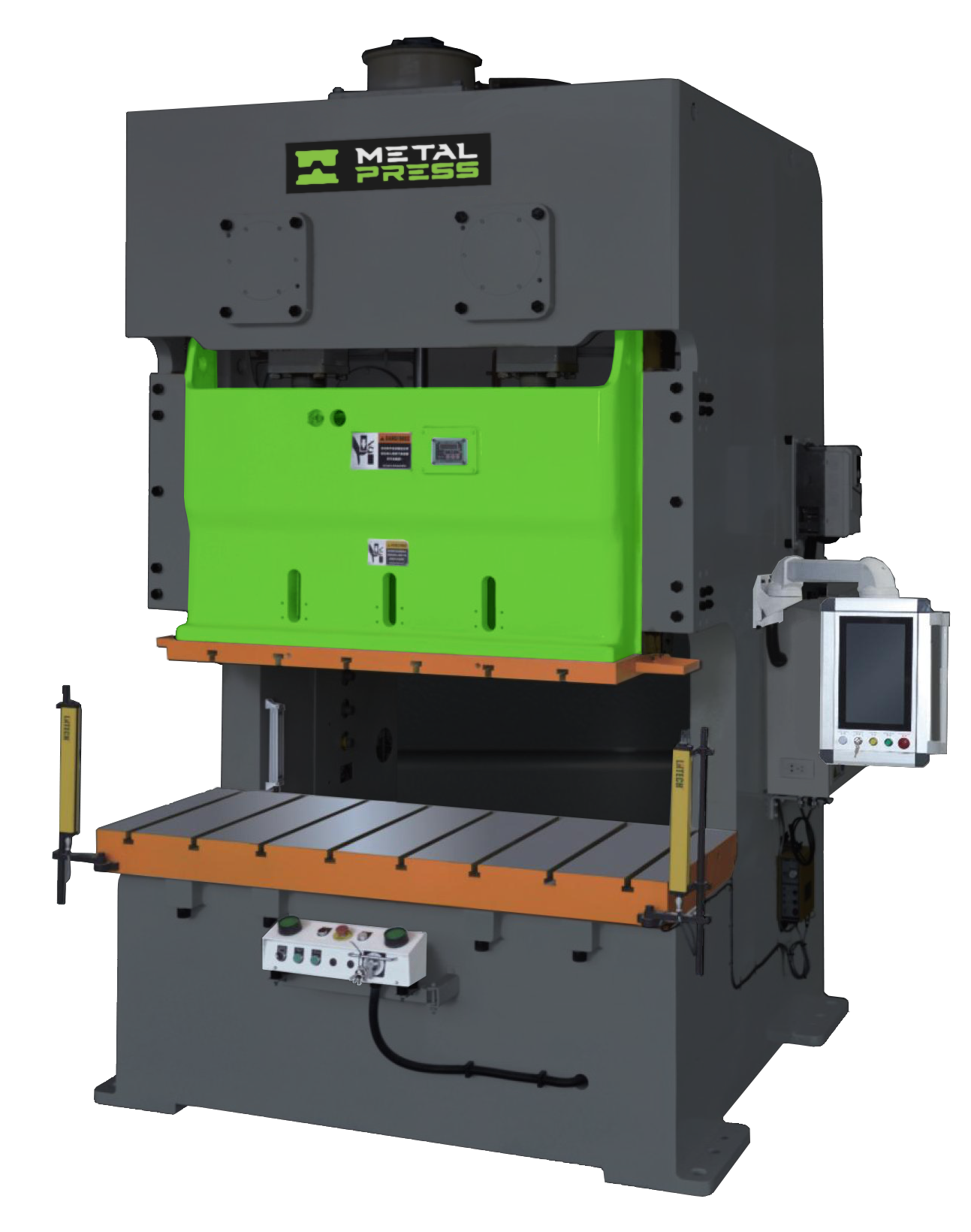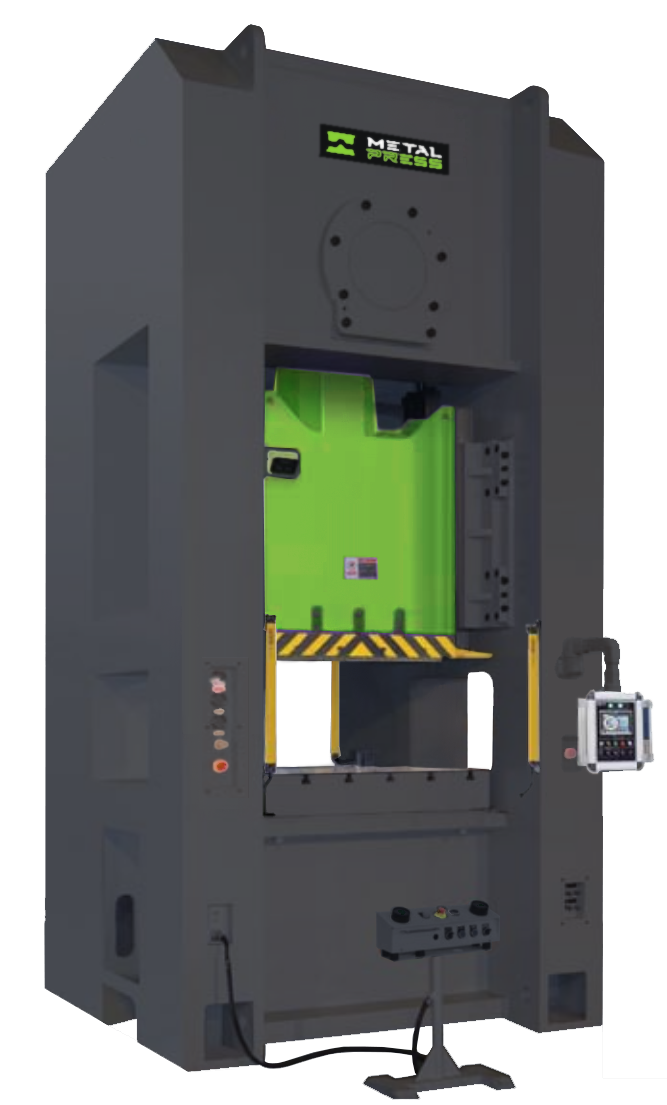Servo Mechanical Presses
Discover our range of Servo Mechanical Presses including C-Frame Single & Double Crank, and Straight Sided Single & Double Point presses.
What are Servo Mechanical Presses?
Servo mechanical presses are advanced forming machines widely used in automotive, aerospace, electronics, appliance, and general metalworking industries. Unlike conventional mechanical presses that rely solely on a flywheel and clutch system operating at fixed speeds, servo mechanical presses integrate servo motors into their drive mechanism. This provides precise control over the ram’s speed, position, and force throughout the entire stroke.
The key difference lies in programmability and flexibility. Traditional mechanical presses operate at constant speed and stroke profiles, limiting adaptability. Servo mechanical presses, on the other hand, allow programmable stroke motions—such as variable speed forming, oscillating motion, or dwell at the bottom dead center. These capabilities enable manufacturers to optimize forming conditions for a wide range of applications including stamping, deep drawing, bending, coining, and progressive die work.
Another major advantage is energy efficiency. Since the servo motor only uses power when required, servo mechanical presses reduce wasted energy compared to continuously running flywheel-driven systems. Additionally, the ability to fine-tune the stroke minimizes wear on tooling, reduces vibration and noise, and extends machine life.
Manufacturers also benefit from higher production quality and throughput. The programmable motion profiles help reduce material springback, improve dimensional accuracy, and allow for faster cycle times without sacrificing precision. Servo mechanical presses also make it easier to handle complex geometries and materials such as high-strength steels, composites, and non-ferrous alloys.
In summary, servo mechanical presses combine the robust force capacity of mechanical presses with the advanced motion control of servo motors. This fusion delivers unmatched flexibility, speed, and accuracy—making them a superior solution for modern high-precision and high-volume forming environments.




